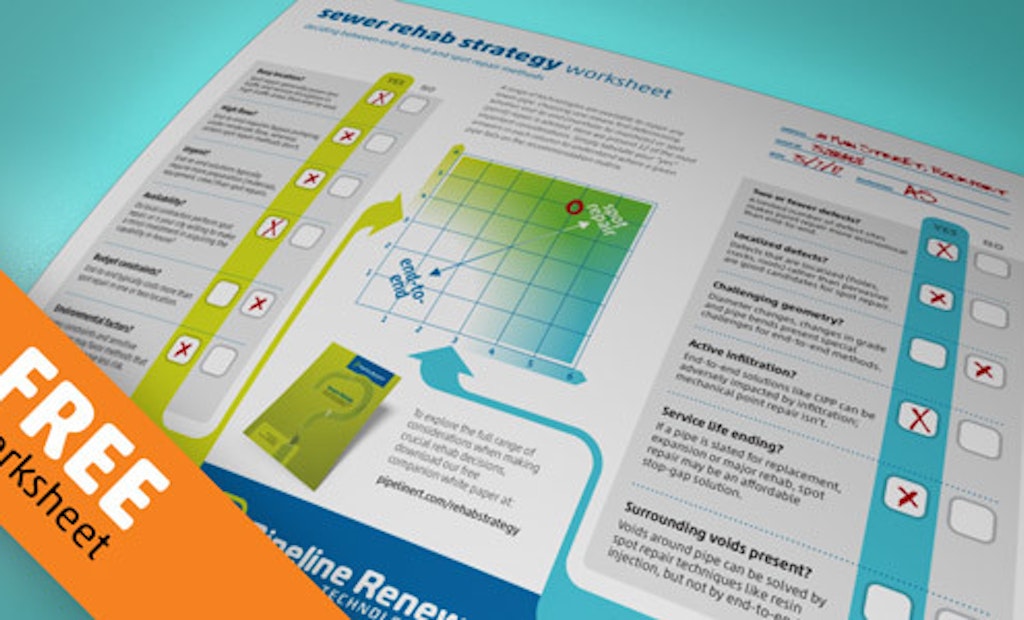Interested in Inspection?
Get Inspection articles, news and videos right in your inbox! Sign up now.
Inspection
+ Get Alerts
When rehabbing a sewer pipe, one of the first decisions you make is whether to use spot repair or end-to-end methods. To help simplify this decision process, Envirosight designed a Sewer Rehab Strategy Worksheet that helps municipal workers and rehab contractors make quick decisions about which approach to utilize in any given line. Click here to download the worksheet.
See how it works with this quick exercise. Below, you’ll find descriptions of two different pipes. Complete the worksheet for both scenarios, then compare your results to the ones linked below.
| Scenario 1
| Scenario 2
|
- The line is relatively straight 45-year-old vitrified clay and due to be replaced as part of scheduled maintenance within 18 months. Though there is an overarching plan for systemwide maintenance including spot repairs, there is little room in the budget for larger rehab projects outside of emergency needs.
- There is circumferential crack and root intrusion in the mainline at a busy intersection with multiple connected residential streets and apartment complexes feeding into it.
- Defects consist of one Grade 2 spiral fracture at an upstream manhole connection, one Grade 3 circumferential crack 6 feet from an upstream manhole and minor root intrusion at both locations. There is minor infiltration at the circumferential crack.
| - The line is 17-year-old ductile iron that is fairly straight and not part of any systemwide rehabilitation or maintenance plan.
- It is in a newer subdivision on a wide, residential cul-de-sac. The budget for repair and rehab is small but there are multiple contractors performing spot repair in the area.
- The line has widespread corrosion across the inside, which has resulted in many pinhole leaks. During the last inspection three years ago, there was no evidence of voids surrounding the line or in other similar lines in the area.
|
Your sheets probably look a lot like these, where Scenario 1 is a good candidate for spot repair, and Scenario 2 is better served with end-to-end rehab. Simply follow the same process for making a determination with any line you come across. The right approach to rehab can save considerable time and money.






